Burning Flesh - Part 2 (Japan)
(This is a continuation to Part I of this blog entry)
The Peace Memorial Museum
After the Cenotaph, I walked to the Peace Memorial Museum
. This is the park's main facility. The force of the bomb obliterated the city of Hiroshima. The bomb, named "Little Boy", possessed a force equivalent to 12,500 tons of TNT.
The Vietnam War Museum I visited in Saigon is a museum of propaganda more than a historical one. I wondered if the Japanese museum would be the same. I wondered what type of reaction I would get from the Japanese as an American citizen touring the museum. Among hundreds of Japanese in the park today, I seem to be one of the few Americans.
The museum displays the history of Hiroshima and the event of the nuclear bomb. The city became known all over the world the day the bomb was dropped on it. The focus of the museum, though, is not to place blame or justify any part of the war, but, the emphasis is on the horrors of war and the dream to prevent any more nuclear wars.
The elusive world peace is the heart of the message in this museum
. This is why the park was named Peace Memorial Park.
Inside the museum there are videos playing about the war and the dropping of the bomb. Photos of the war hang on the walls, with comments below. One of the photos tells how the Japanese attacked Pearl Harbor, bringing the U.S. into the war.
Photographs, videos and panoramic models show the history of Hiroshima before and after the bomb attack. There are victim's belonging on display. There is a lunch box and a tricycle a 3 year old boy was riding at the time of the attack. Both burned and twisted.
Radiation burned clothing of a man are placed on a model. Metal tools used in everyday life are warped and melted to a small portion of their original size.
There is a two-ton steel door on display. It is twisted and mashed like an old can. Slabs of concrete are on display in one part of the museum. The heat from the blast was so intense that people's shadows were burned into the slabs
. There is a set of concrete steps, was stained with an oily spot. It was what remained of one person when the radiation heat from the blast hit him, while he was sitting on the steps.
I walk down a hallway with cases full of watches and clocks. They are all stopped at 8:15 a.m. That was when the electromagnetic shock wave from the bomb froze them forever.
Nowhere do I see any attempt to justify Japan's aggressions on the many countries they invaded and the atrocities they committed against so many of the people of the world. There is nothing trying to explain away the war they started or the attack on the U.S. That is not what the museum is about.
The museum shows artifacts from the nuclear bombing and photos of the destruction. The message, though, is not to prove who was right, but to show the horrors of nuclear war. The emphasis is to rid the world of all nuclear weapons.
There is a large room where buildings in the town after the blast have been re-created. The partially disintegrated buildings of the town are displayed. There are models of people with burning human flesh dripping from their bodies. It's a morbid feeling to walk through the strangely lit halls. It gives you the strange feeling as if you are actually walking around the burned, ruined remains of the city just hit by a nuclear bomb
.
The workers in the museum smile and sometimes bow to me. The Japanese visitors to the museum often smile and motion for me to get closer for a better look. Japan is one of America's strongest allies today. Although the dropping of the atomic bombs on their country is not forgotten, it is forgiven. Likewise, I assume, in the minds of Americans, is the attack on Pearl Harbor.
Outside the museum is a shrine with a flame burning inside. The plaque says it will be extinguished when the last nuclear weapon in the world is destroyed. Any time a nation tests a nuclear bomb, the mayor of Hiroshima, whoever he is at the time, sends a letter to the leader, pleading for the extinction of all nuclear weapons.
As I walked around the park I saw a pogoda with a bell in it and surrounded with large, beautiful Lotus blossoms. The pagoda had a futuristic style to it. People were lined up to swing a large log and strike the bell
.
There was a large group of Japanese school children on a field trip lined up to strike the bell, so I knew it would take too long for me to stand in the line to strike it. Although, I would have really like to.
When the bell is hit, it omits a beautiful mellow tone that resonates all around the park. The way I understand it, when the bell is hit, prayers for the victim's souls fly skyward.
In the park is a large grass-covered mound. It is the burial site for 100,000 Japanese who died that day. Schoolchildren from around the world send brightly covered origami birds to be placed here. They are tied to the trees covering the mound. The Japanese Army mobilized schoolchildren after the blast to collect the bodies for burial. There were not enough adults alive to do the job.
Just outside the park is another mound. It is much smaller. It is the grave-site of all the Koreans that died in the blast. They were not allowed to be buried in the park because of the severe animosity between the two countries.
The debate over the morality of using the bomb will never end. The facts are that 9 out of 10 victims were women and children. Another bomb was dropped on Nagasaki, Japan two days later, having the same results. Fortunately, no other atomic bomb has been used in the world since that time.
President Truman decided the bomb was the best way to bring the war to an end. The Japanese were moving around the world, causing the death of thousands, as I wrote about in an earlier entry http://blog.travelpod.com/travel-blog-entries/usatexan/1/1359088219/tpod.html.
Even with the huge number of deaths from the bomb, Truman felt that thousands of innocent civilians and military around the world would be spared by ending the war.
The memorial is a reminder of what man can to do man. It's a plea for all humanity not to allow it to happen again.
It was said Hiroshima would not be able to be inhabited after the bomb, but that proved false. Today the large metropolis of Hiroshima is thriving, and a living testimony of the destruction and horrors of war.
Visiting the museum gives me the same feeling of helplessness that visiting the killing fields in Cambodia and the Pearl Harbor memorial did.
Burning Flesh - Part 2 (Japan)
Tuesday, October 01, 2013
 Hiroshima, Chugoku, Japan
Hiroshima, Chugoku, Japan
Other Entries
-
91As Beautiful As It Is Dangerous
Sep 0526 days prior Kihei, United Statesphoto_camera114videocam 2comment 2
Kihei, United Statesphoto_camera114videocam 2comment 2 -
92A Walk In The Clouds
Sep 0625 days prior Haleakala National Park, United Statesphoto_camera137videocam 2comment 3
Haleakala National Park, United Statesphoto_camera137videocam 2comment 3 -
93The Playground Called Waikiki
Sep 1021 days prior Waikiki, United Statesphoto_camera60videocam 3comment 0
Waikiki, United Statesphoto_camera60videocam 3comment 0 -
94Today I Found A Diamond
Sep 1120 days prior Waikiki, United Statesphoto_camera89videocam 1comment 0
Waikiki, United Statesphoto_camera89videocam 1comment 0 -
95"Don't Worry About It"
Sep 1219 days prior Honolulu, United Statesphoto_camera135videocam 0comment 0
Honolulu, United Statesphoto_camera135videocam 0comment 0 -
96It's Friday the 13th - Does That Matter?
Sep 1318 days prior Honolulu, United Statesphoto_camera55videocam 3comment 0
Honolulu, United Statesphoto_camera55videocam 3comment 0 -
97..........And The Skipper Too
Sep 1417 days prior Waikiki, United Statesphoto_camera73videocam 10comment 0
Waikiki, United Statesphoto_camera73videocam 10comment 0 -
98As The Sun Sets
Sep 1714 days prior Maui, United Statesphoto_camera101videocam 4comment 0
Maui, United Statesphoto_camera101videocam 4comment 0 -
99THE BED!
Sep 1912 days prior Tokyo, Japanphoto_camera10videocam 0comment 2
Tokyo, Japanphoto_camera10videocam 0comment 2 -
100First Day in Tokyo
Sep 1912 days prior Tokyo, Japanphoto_camera33videocam 1comment 3
Tokyo, Japanphoto_camera33videocam 1comment 3 -
101Iranians Like America
Sep 2011 days prior Tokyo, Japanphoto_camera68videocam 2comment 2
Tokyo, Japanphoto_camera68videocam 2comment 2 -
102A Young Woman Passes Me A Note
Sep 2110 days prior Nikko, Japanphoto_camera121videocam 0comment 2
Nikko, Japanphoto_camera121videocam 0comment 2 -
103I'm Being Followed . . . and I Feel Uncomfortable
Sep 229 days prior Nikko, Japanphoto_camera54videocam 2comment 3
Nikko, Japanphoto_camera54videocam 2comment 3 -
104Faster Than A Speeding Bullet (Japan)
Sep 274 days prior Kyoto, Japanphoto_camera34videocam 2comment 2
Kyoto, Japanphoto_camera34videocam 2comment 2 -
105The White Deer
Sep 283 days prior Nara, Japanphoto_camera67videocam 0comment 0
Nara, Japanphoto_camera67videocam 0comment 0 -
106The Thousands of Gates (Japan)
Sep 292 days prior Kyoto, Japanphoto_camera101videocam 1comment 0
Kyoto, Japanphoto_camera101videocam 1comment 0 -
107Burning Flesh -Part I (Japan)
Sep 301 day prior Hiroshima, Japanphoto_camera43videocam 1comment 0
Hiroshima, Japanphoto_camera43videocam 1comment 0 -
108Burning Flesh - Part 2 (Japan)
Oct 01 Hiroshima, Japanphoto_camera40videocam 0comment 0
Hiroshima, Japanphoto_camera40videocam 0comment 0 -
109Bathing With Naked Men (Japan)
Oct 021 day later Miyajima, Japanphoto_camera52videocam 0comment 2
Miyajima, Japanphoto_camera52videocam 0comment 2 -
110Don't Look Him In The Eyes (Japan)
Oct 032 days later Arashiyama, Japanphoto_camera166videocam 5comment 0
Arashiyama, Japanphoto_camera166videocam 5comment 0 -
111The Land of the Rising Sun (Japan)
Oct 043 days later Shanghai, Chinaphoto_camera50videocam 1comment 0
Shanghai, Chinaphoto_camera50videocam 1comment 0 -
112Feeding the Dead (Cambodia)
Oct 054 days later Siem Reap, Cambodiaphoto_camera35videocam 3comment 0
Siem Reap, Cambodiaphoto_camera35videocam 3comment 0 -
113My Chair is Under Water (Cambodia)
Oct 109 days later Battambang Province, Cambodiaphoto_camera117videocam 3comment 0
Battambang Province, Cambodiaphoto_camera117videocam 3comment 0 -
114It's Not The Big Top (Cambodia)
Oct 2423 days later Battambang Province, Cambodiaphoto_camera50videocam 4comment 0
Battambang Province, Cambodiaphoto_camera50videocam 4comment 0 -
115Who Stole My Sandals? (Cambodia)
Oct 2625 days later Battambang Province, Cambodiaphoto_camera88videocam 1comment 0
Battambang Province, Cambodiaphoto_camera88videocam 1comment 0 -
116Fire In The Sky (Thailand)
Nov 1646 days later Pattaya, Thailandphoto_camera60videocam 5comment 2
Pattaya, Thailandphoto_camera60videocam 5comment 2 -
117Happy Holidays (Vietnam)
Nov 2555 days later Hanoi, Vietnamphoto_camera1videocam 0comment 0
Hanoi, Vietnamphoto_camera1videocam 0comment 0 -
118The Hands from Hell (Thailand)
Nov 2656 days later Chiang Rai Province, Thailandphoto_camera91videocam 3comment 0
Chiang Rai Province, Thailandphoto_camera91videocam 3comment 0 -
119Black House Chiang Rai (Thailand)
Nov 2757 days later Chiang Rai, Thailandphoto_camera199videocam 1comment 0
Chiang Rai, Thailandphoto_camera199videocam 1comment 0 -
120The Clock (Thailand)
Nov 2858 days later Chiang Rai Province, Thailandphoto_camera58videocam 1comment 0
Chiang Rai Province, Thailandphoto_camera58videocam 1comment 0 -
121The Epic Journey (Laos)
Nov 2959 days later Chiang Khong, Thailandphoto_camera70videocam 2comment 0
Chiang Khong, Thailandphoto_camera70videocam 2comment 0 -
122Shipwreck on the Mekong (Laos)
Nov 3060 days later Huay Xai, Laosphoto_camera70videocam 4comment 2
Huay Xai, Laosphoto_camera70videocam 4comment 2 -
123Please Cover Your Body - (Laos)
Dec 0161 days later Luang Prabang, Laosphoto_camera141videocam 0comment 0
Luang Prabang, Laosphoto_camera141videocam 0comment 0 -
124Discovering Luang Prabang (Laos)
Dec 0262 days later Luang Prabang, Laosphoto_camera136videocam 0comment 0
Luang Prabang, Laosphoto_camera136videocam 0comment 0 -
125Waterfall on the Mekong (Laos)
Dec 0363 days later Luang Prabang, Laosphoto_camera57videocam 0comment 2
Luang Prabang, Laosphoto_camera57videocam 0comment 2 -
126Rudeness at Dawn (Laos)
Dec 0464 days later Luang Prabang, Laosphoto_camera104videocam 1comment 0
Luang Prabang, Laosphoto_camera104videocam 1comment 0

 Hiroshima, Chugoku, Japan
Hiroshima, Chugoku, Japan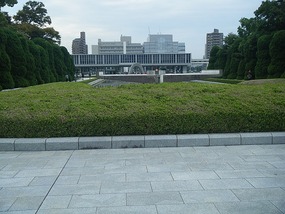
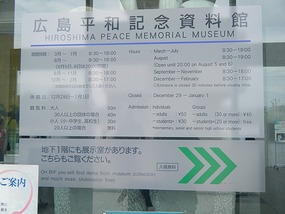

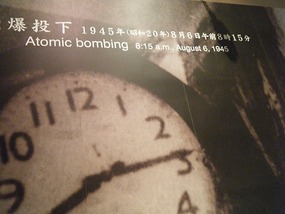
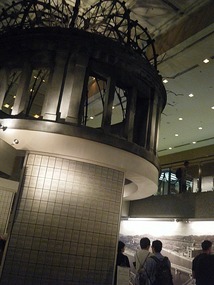







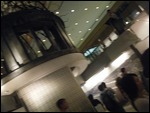
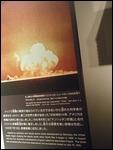
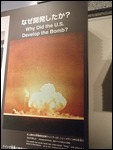
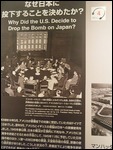
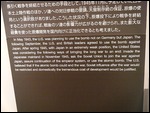
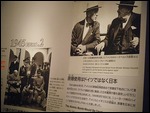
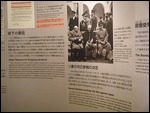
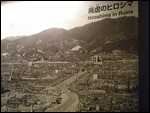
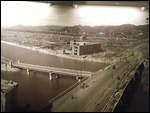
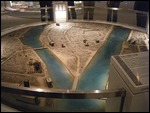

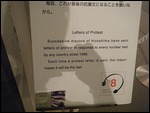
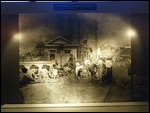
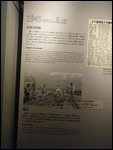

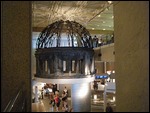
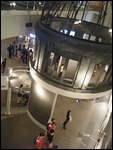
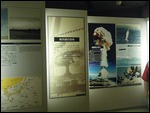
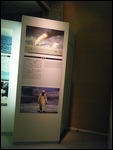
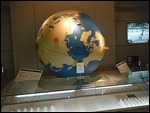

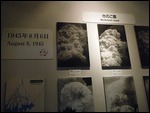
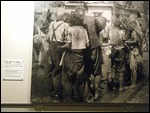
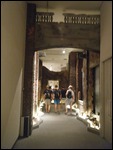
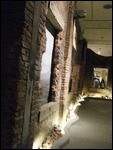
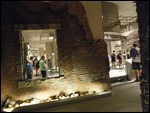
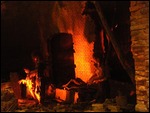
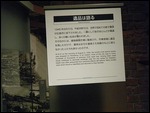
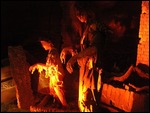
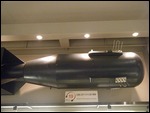
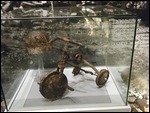
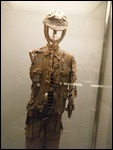
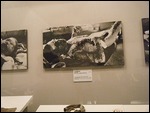
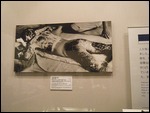
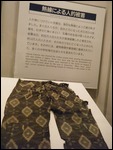
2025-05-22